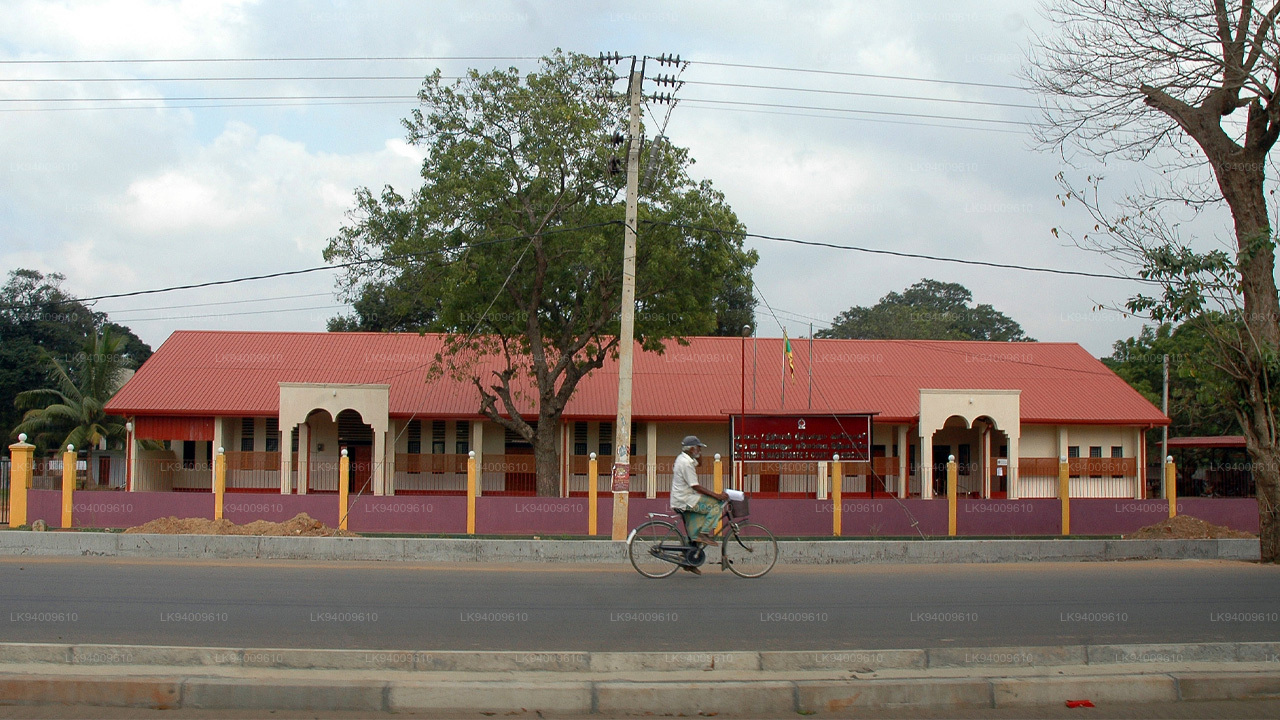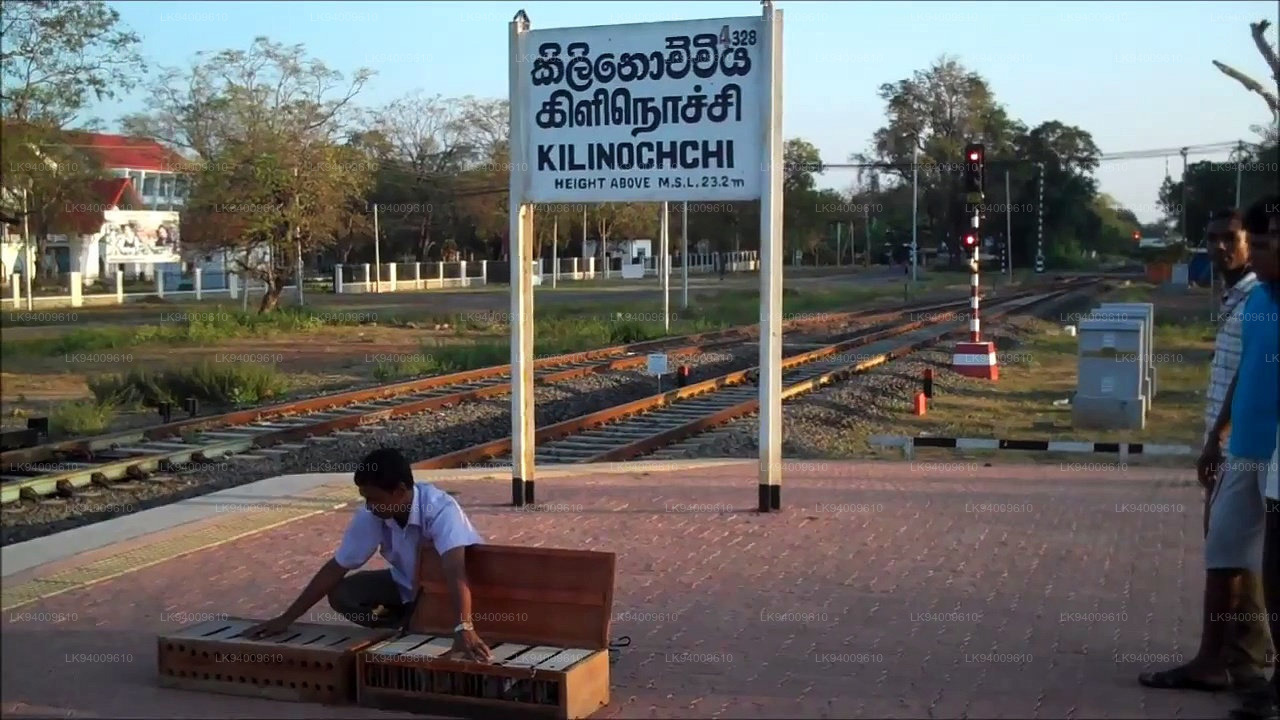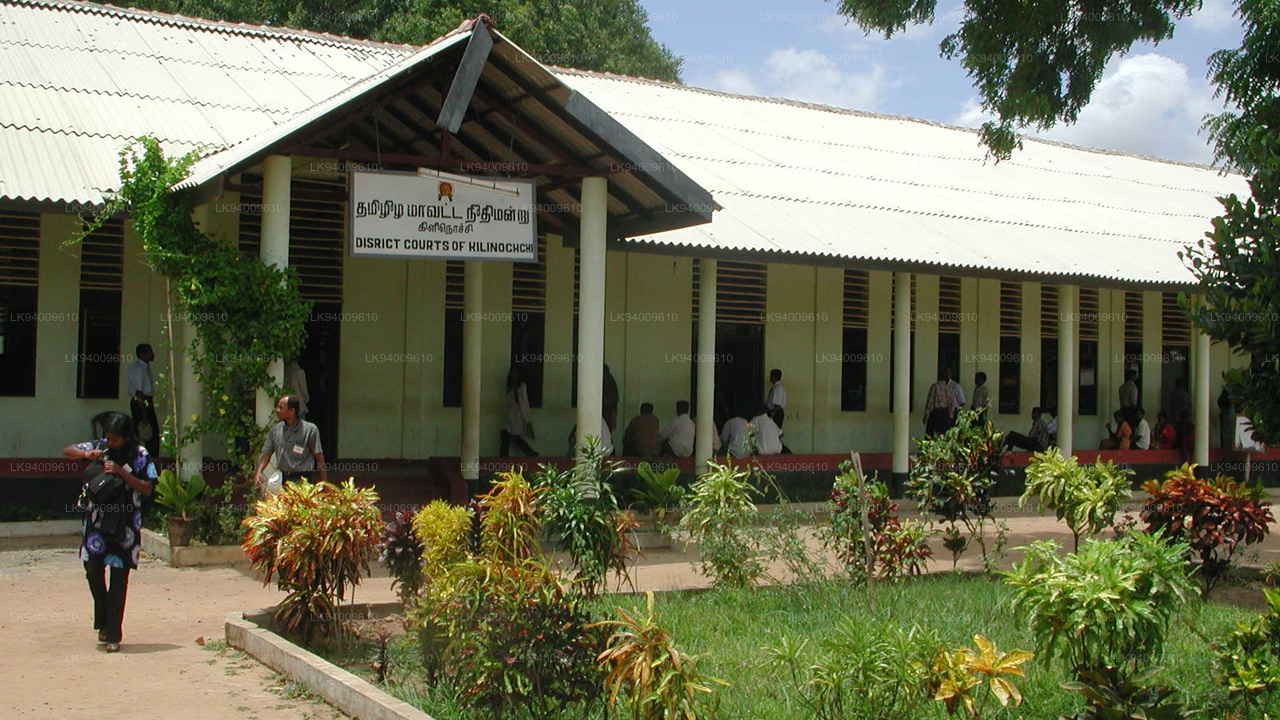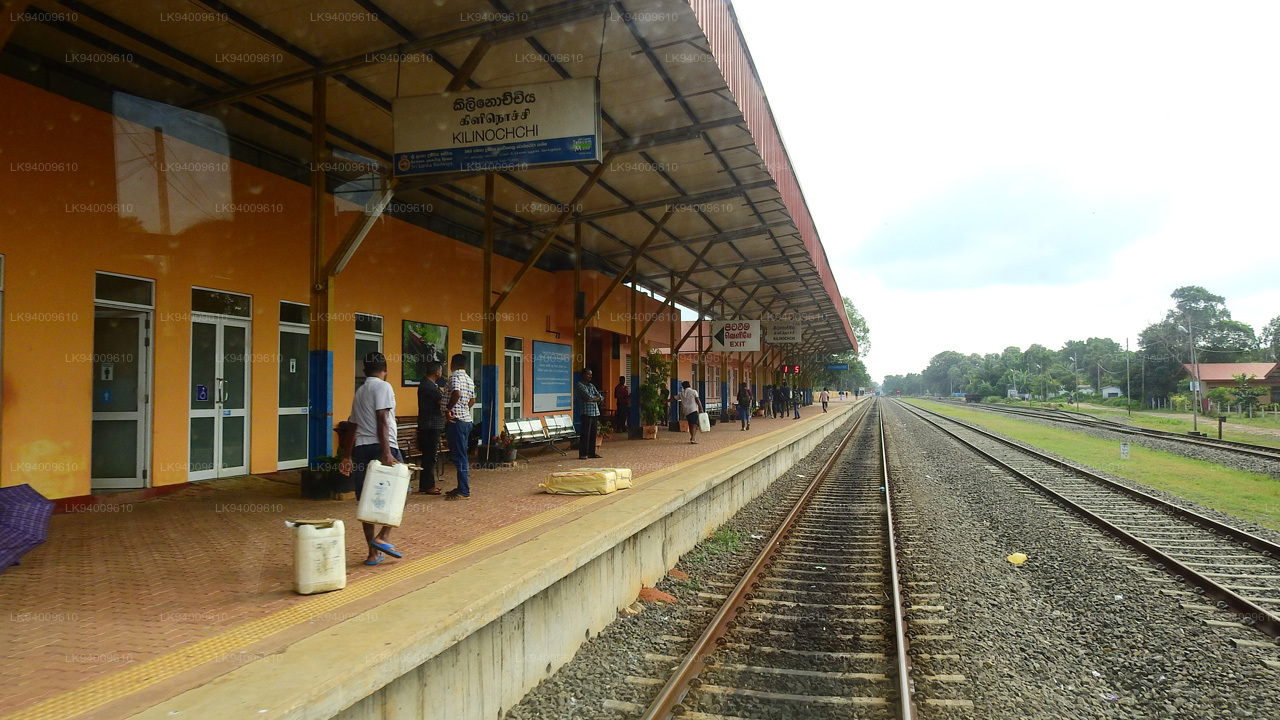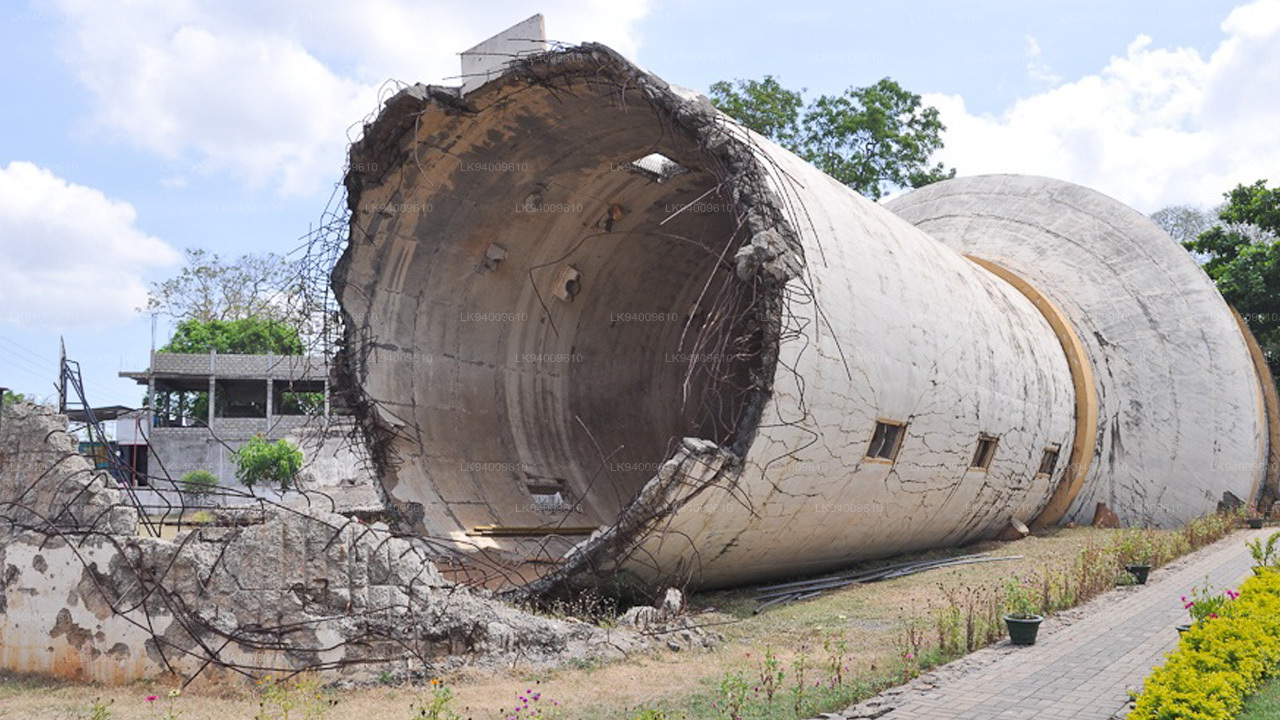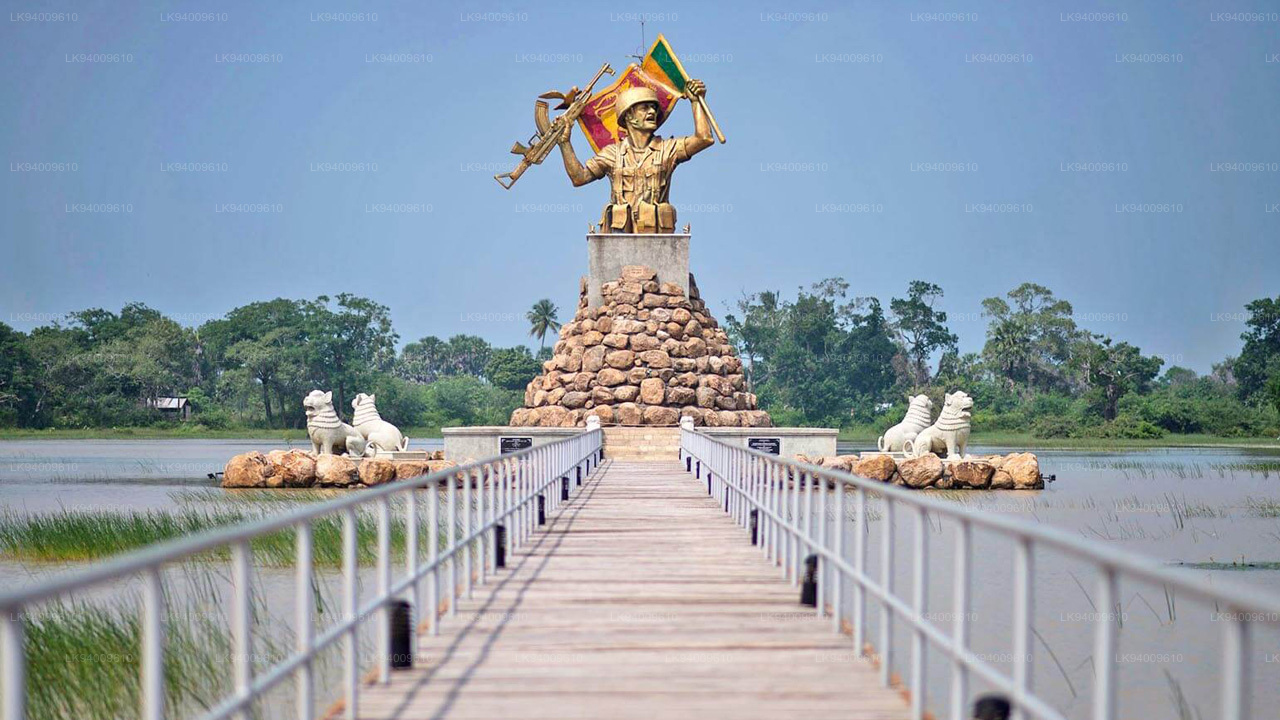
Jaffna City
Jaffna is the main city of Jaffna peninsula in the northernmost district of Sri Lanka. Comfortable intercity busses from Colombo take 10-12 hours to reach the city of Jaffna.
Kilinochchi
Kilinochchi is the main town of Kilinochchi District, Northern Province of Sri Lanka. Kilinochchi is situated at the A9 road some 100 km (62 mi) south-east of Jaffna. It was the administrative center and de facto capital of the LTTE (Tamil Tigers)[1] until 2 January 2009, when troops of the Sri Lankan Army recaptured the city.
The Kilinochchi town was established in 1936 as part of a colonization project that sought to ease overpopulation and unemployment in Jaffna. Kilinochchi is still part of Jaffna electoral division and it was separated from the Jaffna district in the 1980s as a new district. Most of the people living in this district are farmers and related to agricultural work. Most of the people were migrated from Jaffna 1930s to acquire government grants for land and to engage in paddy (rice) cultivation. Large influx of migration from Hill country into Kilinochchi happened in 1970s. They were then migrated overseas (Europe, US, Canada, Australia, etc.) during the civil war (1990 onward). The population is rising again after the end of the civil war.
Sri Lankan Civil WarThe LTTE first took hold of the town in 1990 when the Army withdrew its garrisons from Kilinochchi. Then the area was retaken by the Army during operations Sathjaya I, II, and III in September 1996. The town again fell into the LTTE's hand in September 1998 who held their administrative hub there until retreating during the Battle of Kilinochchi on 2 January 2009.
Several institutions of the LTTE were forced to relocate from Kilinochchi to Tharmapuram, a town about 13 km in the east, by early October, 2008 in fear of death by advancing government troops. Security Forces Headquarters – Kilinochchi was established on June 29, 2009, in the town.
About Kilinochchi District
Kilinochchi District is one of the 25 districts of Sri Lanka, the second level administrative division of the country. The district is administered by a District Secretariat headed by a District Secretary (previously known as a Government Agent) appointed by the central government of Sri Lanka. The capital of the district is the town of Kilinochchi.
Between 5th century BC and 13th century AD present day Kilinochchi District was part of Rajarata. Much of Kilinochchi District was thereafter part of the pre-colonial Jaffna kingdom. The district then came under Portuguese, Dutch and British control. In 1815 the British gained control of the entire island of Ceylon. They divided the island into three ethnic based administrative structures: Low Country Sinhalese, Kandyan Sinhalese and Tamil. The district, which was then part of Jaffna District, was part of the Tamil administration. In 1833, in accordance with the recommendations of the Colebrooke-Cameron Commission, the ethnic based administrative structures were unified into a single administration divided into five geographic provinces.Jaffna District, together with Mannar District and Vanni District, formed the new Northern Province.
About Jaffna District
Jaffna is the capital city of the Northern Province, Sri Lanka. 85% of the populations of the Jaffna and Kilinochchi districts are Hindus. The Hindus follow the Saivite tradition. The remainders are largely Roman Catholics or Protestants, some of whom are descendants of colonial settlers, known as Burghers. The Tamils are divided along caste lines, with the farmer-caste Vellalar forming the majority. Sea products, red onion, and tobacco are the main products in Jaffna.
Jaffna is home to beautiful Hindu temples. An Old Dutch Fort still stands well preserved within which is an old Church. Another example of Dutch architecture is the King's House. No visit to Jaffna is complete without tasting the exquisite Jaffna mango, reputed for its sweetness. About 3 km away is the majestic Nallur Kandaswamy Temple, home to the largest religious festival in Jaffna. The Kayts Harbour is an ancient ship docking site in the Jaffna region.
About Northern Province
The Northern Province is one of the 9 provinces of Sri Lanka. The provinces have existed since the 19th century but they didn't have any legal status until 1987 when the 13th Amendment to the 1978 Constitution of Sri Lanka established provincial councils. Between 1988 and 2006 the province was temporarily merged with the Eastern Province to form the North-East Province. The capital of the province is Jaffna.
Northern Province is located in the north of Sri Lanka and is just 22 miles (35 km) from India. The province is surrounded by the Gulf of Mannar and Palk Bay to the west, Palk Strait to the north, the Bay of Bengal to the east and the Eastern, North Central and North Western provinces to the south.The province has a number of lagoons, the largest being Jaffna Lagoon, Nanthi Kadal, Chundikkulam Lagoon, Vadamarachchi Lagoon, Uppu Aru Lagoon, Kokkilai lagoon, Nai Aru Lagoon and Chalai Lagoon.Most of the islands around Sri Lanka are to be found to the west of the Northern Province. The largest islands are: Kayts, Neduntivu, Karaitivu, Pungudutivu and Mandativu.
The Northern Province's population was 1,311,776 in 2007. The majority of the populations are Sri Lankan Tamils, with a minority Sri Lankan Moor and Sinhalese population. Sri Lankan Tamil is the major language spoken in the province by the vast majority of the population. The other language spoken is Sinhala by 1 percent of the population. English is widely spoken and understood in the cities.

